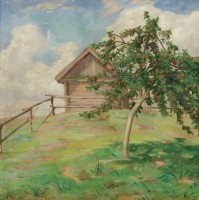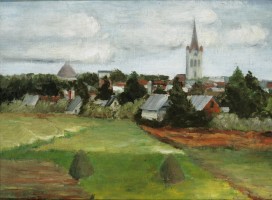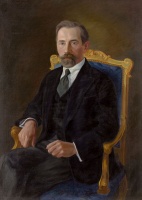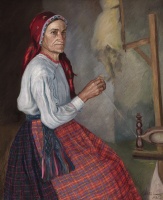
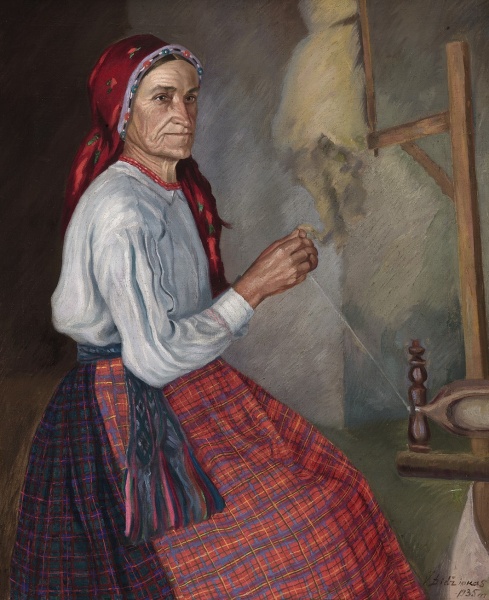
The spinner
| Author: |
Vladas Didžiokas (1889–1942)  |
| Created: | 1935 |
| Material: | canvas |
| Technique: | oil |
| Dimensions: | 92 × 76 cm |
| Signature: | bottom right: V. Didžiokas / 1935 m. |
The ethnographic trend in Lithuanian painting gathered momentum with the first exhibitions held by Lithuanian artists in the early 20th century. When the Lithuanian Art Society mounted exhibitions before the First World War, Antanas Žmuidzinavičius’ large figure painting The daughter-in-law (1910, ČDM), portraying a young woman in national costume against a wall decorated with country-style cloths and sashes, stood out. A classic example of ethnographic painting is Olga Dubeneckienė-Kalpokienė’s picture The bride (ca. 1926, ČDM) . As a portrait of the Kaunas opera’s prima-donna Adelė Galaunienė dressed in national costume, it represented Lithuanian women at the 1930 International Hygiene Exhibition in Dresden, and in 1939 it was taken to the New York World Fair for the same purpose, and given a prominent position in the Lithuanian pavilion. The spinner by Vladas Didžiokas (1889–1942) is another example of a little-known ethnographic painting. It is important because it comes from the studio of a rather unproductive painter, and vastly increases our knowledge about Didžiokas and his oeuvre.
Source: Law firm Valiunas Ellex art album MORE THAN JUST BEAUTY (2012). Compiler and author Giedrė JankevičiūtėExpositions: “More Than Just Beauty: The Image of Woman in the LAWIN collection”, 12 October – 11 November 2012, National Gallery of Art, Vilnius (curator Giedrė Jankevičiūtė); "Lithuanian Traditional and Folk Costumes: Textiles, Graphic Art, Painting", 11 May – 5 November 2017, Museum of the Radvilas Palace, Vilnius (curator Dalia Bernotaitė-Beliauskienė, Rima Rutkauskienė)







